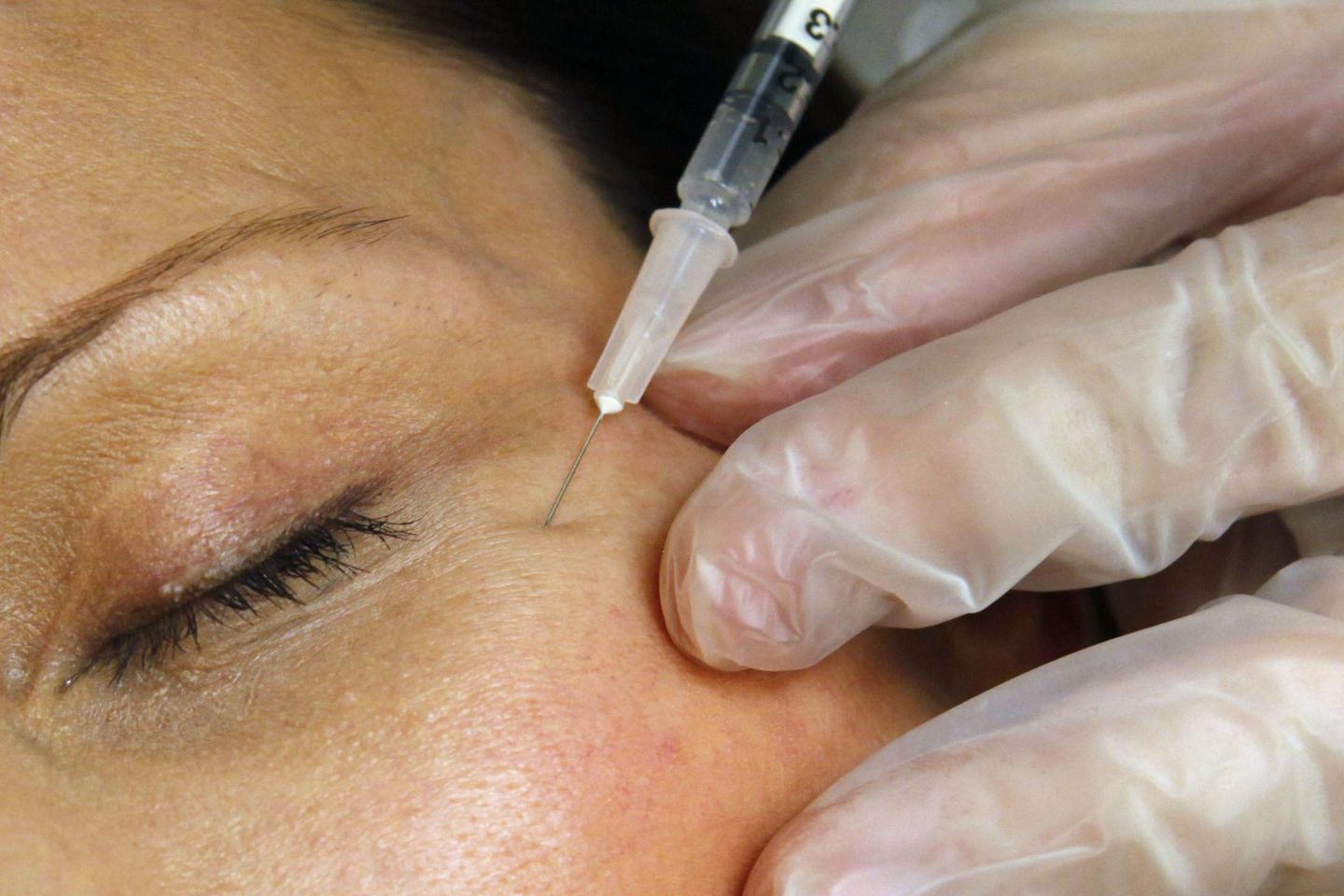
Young women, especially those ages 18 to 24, are increasingly using Botox as part of their beauty regimen, but some health experts warn of risks from the cosmetic toxin.
From 2019 to 2022, the use of botulinum toxin, or Botox, which affects nerves and muscles, increased by 71% among 20- to 29-year-old patients and 75% among patients 19 and younger, according to the American Society of Plastic Surgeons.
Botox has long been injected into patients’ faces to produce a more youthful appearance. It paralyzes nerves and muscles that can create fine lines and wrinkles.
Its use by young, wrinkle-free patients is a more recent development that has evoked caution among licensed health care specialists known as naturopaths, who specialize in alternative holistic therapies.
Some young women are getting “baby Botox,” which are small doses injected into smooth skin with the goal of keeping it that way.
“Beautiful young women … say, ‘We’re going to take this toxin that causes muscle paralysis,’” said DeJarra Sims, a naturopathic specialist and CEO of Superhero Skincare in Texas. “‘And what can we use it for? Oh, we can stop our face from moving so that we no longer have wrinkles.’ If you’re looking at it from a natural health point of view, it doesn’t make sense.
“Everyone looks like comic book characters,” Ms. Sims said.
Physicians who provide the procedure note the declining age of their patients with alarm.
Dr. Shereene Idriss, a dermatologist who practices in New York City, said the median age of her clients gets younger every year. She said some arrive asking for Botox to treat wrinkles that don’t exist.
“They’re coming in without any lines or built-in markings on their skin,” Dr. Idriss said in an interview on CNN. “And they’re coming in with a fear of aging.”
That fear, many experts say, is fueled by social media use.
TikTok and Instagram are filled with videos of 20-somethings and even some teens documenting their Botox experiences. One TikTok user said she was “going to get baby Botox for the first time because I had a singular crease on my forehead.”
CNN reported that tweens and younger girls are becoming obsessed with skin care routines designed for adults. Dubbed “Sephora kids,” many reportedly buy products with active ingredients such as retinol and glycolic acid, which are not intended for young skin.
“Social media is incredibly powerful, and it really has worked its way to the consciousness of everyone but particularly younger females,” Dr. Steven Williams, a plastic surgeon and past president of the American Society of Plastic Surgeons, told CNN.
He said nothing is wrong with cosmetic enhancement or preventive care in theory but young people should be wary of the messaging.
“It’s important to realize that we’re being sold something,” Dr. Williams said. “We’re being used a little bit.”
Some providers advertise bargain Botox for as little as $7 a unit, but the Mayo Clinic emphasized that Botox should be injected only by licensed professionals — dermatologists, plastic surgeons or trained specialists — who understand the medical precision the procedure demands.
Dermatologists have begun using social media to urge young women to exercise restraint. Dr. Chris Tomassian recommends delaying retinol until the late 20s, and Dr. Muneeb Shah advises holding off on Botox until the mid-20s to mid-30s, once fine lines begin forming.
Experts say the chance of fatally overdosing on Botox is nearly zero, but misuse or mishandling can lead to harmful complications.
Botox skeptics say the allure doesn’t outweigh the potential for physical and emotional disruption for young women. The muscles and nerves that Botox paralyzes to prevent wrinkles play a role in producing facial expressions of surprise, displeasure and happiness, among others.
A 2023 study by the University of California, Irvine, and Botox manufacturer AbbVie said users of Botox showed altered brain activity when viewing emotional expressions. Researchers said facial paralysis disrupts emotional mirroring, an instinctive process of copying expressions that helps humans learn to communicate and connect.
The Food and Drug Administration approves Botox for cosmetic purposes and to treat migraines and excessive sweating, and some evidence points to potential mood-related benefits. A 2020 Scientific Reports study found lower rates of depression in people who received Botox, regardless of the reason.
“With all patients, it’s not just about how they look, but how the way they look makes them feel,” Dr. Frances Prenna Jones, a British dermatologist, told Elle magazine. “It is often triggered by life-changing events.”
Blake Kovner, a naturopathic doctor in Asheville, North Carolina, said glowing skin starts from the inside, not from a vial.
“There are arguments for Botox,” Ms. Kovner told The Washington Times. “But there are always natural alternatives to injecting toxins into our bodies.”
Ms. Kovner helps patients repair gut health, stabilize hormones and manage stress. She said these slower changes produce lasting skin improvements, which younger women should consider instead as they plan their skin’s future.
“The skin is always the last thing to flourish,” she said. “But it does always happen, and it’s quite a radiant effect.”
Ms. Sims said she doesn’t have all the answers on maintaining youth, but she wants young women to ask better questions of those who promote Botox as the solution.
“How often can you get Botox before your body is overwhelmed with toxins?” she said. “What is the answer to that? We don’t know. And I don’t think they’re going to tell us. Because if they did, we’d stop getting it.”
















